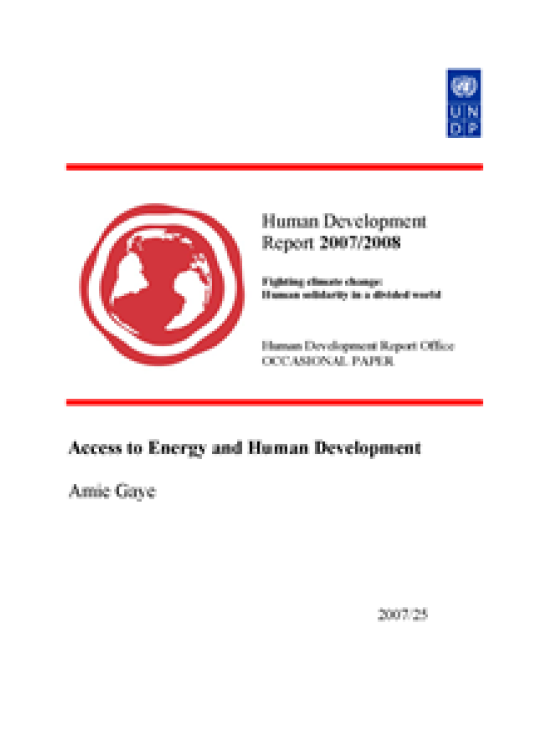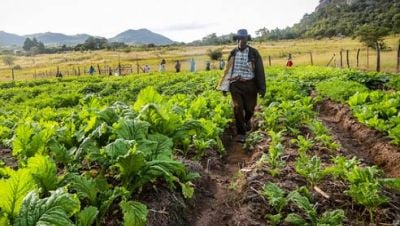Access to Energy and Human Development

Download Report by Language
Document
gayeamie.pdf
(331.98 KB)
Citation
Gaye, Amie. 2008. Access to Energy and Human Development. New York.
Access to Energy and Human Development
Posted on: January 01, 2008
Access to modern energy services is fundamental to fulfilling basic social needs, driving economic growth and fueling human development. This is because energy services have an effect on productivity, health, education, safe water and communication services. Modern services such as electricity, natural gas, modern cooking fuel and mechanical power are necessary for improved health and education, better access to information and agricultural productivity. There are wide variations between energy consumption of developed and developing countries, and between the rich and poor within countries, with attendant variations in human development. Furthermore, the way in which energy is generated, distributed and consumed affects the local, regional and global environment with serious implications for poor people’s livelihood strategies and human development prospects1. This paper attempts to examine the linkages between energy services and human development in developing countries. It does so by comparing modern energy use in developed and developing countries and argues that a threshold of modern energy is required to achieve growth and improvement in human development. The paper also assesses the effect of fossil fuel use on greenhouse gas emissions and developing countries’ capacity to adapt to climate change. It discusses the dual challenge of mitigating climate change and meeting the energy demands of developing countries in a sustainable way. The paper is divided into three main sections. Section one examines inequalities in access to modern energy services and how they impact on livelihood strategies, health, education and human development in general. Section two looks at adaptation capacities of developing countries, whilst section three discusses strategies for mitigating climate change while at the same time meeting the energy demands of developing countries.

